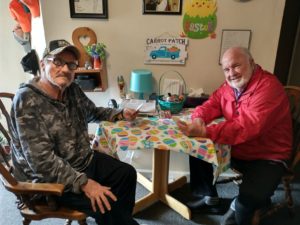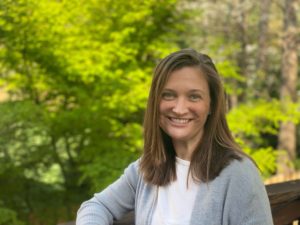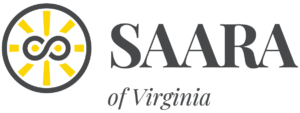Take Me Out to the Ball Game
Read the article that appeared in the May 2022 Edition of Front Porch Magazine.
I recently had the pleasure of meeting with Steve D’Lugos and his friend, Tim, as they sat down to their weekly visit and card game.
Steve volunteers with Mental Health America of Fredericksburg’s Senior Visitors Program. Steve was introduced to the Senior Visitors Program through his wife and daughter who also volunteer with the program. Steve began visiting with Tim last autumn.
Steve said of his volunteer service, “It’s all about giving of yourself to another person. We all need “a buddy”. It is nice to have someone to give time to and I have time to give. I get a lot of satisfaction out of volunteering. I learn a lot from Tim and Tim has a lot to share.” Tim said of Steve, “He is the first real person I’ve met who treats people right. He is a good, generous person who tells the truth.” Tim then joked, “That’s why I haven’t thrown him out yet.”
“Tim has a great personality. He loves to joke and kid me,” Steve replied. “He teases me that I cheat at cards, but really, I have to keep my eye on him.”
Steve went on to say, “Tim is a veteran who served his country well and deserves the best. Tim is fun to spend time with and a pleasure to visit.”
As it turns out, both Tim and Steve are veterans. Tim served in the Army and Steve served in the Marines. Regarding their service in different military branches, there was some good-natured teasing before they both assured me, “We don’t let that bother us. We enjoy visiting and sharing our experiences [from our service].”
Tim and Steve meet weekly, usually playing a game of hearts. Occasionally they like to go for a drive. Once they went for a drive out to the Tappahannock area. They are hoping this spring to attend a baseball game.
Tim showed me his Fred Nats Game Schedule and explained, “I’m trying to walk more and prepare myself so Steve can take me to a game.”
I hope these friends will soon get their day at the ballpark, and I hope they can continue to enjoy their card games and visits for a long time to come.
If you would like to volunteer to visit a senior, or you know a senior who could benefit from having a weekly, friendly visit, call the Senior Visitors Program at (540) 371-2704 or visit our website at mhafred.org. The Senior Visitors Program is a free community service program of Mental Health America of Fredericksburg.
Laurie Black is the Senior Visitors Program Coordinator at Mental Health America of Fredericksburg.
Authentic Self-Care
Read the article that appeared in the May 2022 Edition of Front Porch Magazine.
Self-care is a buzz word these days. Everywhere we look it seems a different business is plugging their product all for the name of self-care – wear these silk pajamas, buy this fancy bath bomb, treat yourself to dessert at our restaurant – but what is true self-care?
This is the first story of a series in which I delve into what authentic self-care is by having conversations with local mental health professionals listed in Mental Health America of Fredericksburg’s HELPLINE resource.
Recently I spoke with Dr. Elisabeth Jerome, Owner and Director of Wellspring Child & Family Psychology. Wellspring has been serving families in the Fredericksburg area with their behavioral health services since 2014.

Dr. Jerome defines self-care using her background in attachment: “I think of self-care as the caretaking relationship we have with ourselves. As kids, we have a caregiver; but as adults, we are our own caregiver. I think [self-care] is about my relationship with myself as a caregiver.”
The way in which we talk to ourselves is integral to building healthy self-care practices, according to Dr. Jerome. When I asked her to share a self-care tip, she said, “Start to notice your internal dialogue. If you notice that you are talking to yourself in a way that you would not talk to someone you love, then that probably is a good indication that your self-talk is a little distorted or unbalanced.”
Everyone can use a little more self-care in their lives. But sometimes self-care is not enough. If you or someone you know is experiencing mental health challenges, extra support may be necessary. Help can come in a variety of ways, such as counseling or support groups.
Twice a year, Wellspring partners with Mental Health America of Fredericksburg (MHAfred) to provide a free psychoeducational support group for teens. I asked Dr. Jerome what she thinks is special about this partnership. She shared, “The teen group is one of my favorite services we offer. I’m a firm believer that everyone’s mental health affects everyone in the community. Making services accessible to all people is so important.”
MHAfred maintains an extensive list of local mental health providers that we call the HELPLINE. We keep track of the services offered in the area, insurances accepted, and new client availability. If you are looking for a local mental health provider or want to learn more about MHAfred’s programs, call Mental Health America of Fredericksburg at (540) 371-2704 or visit our website at mhafred.org.
Anne-Tillery Melson is the Suicide Prevention Education Coordinator at Mental Health America of Fredericksburg.
Look What You’ve Helped Us Do!
Look what you’ve helped us do:
Hundreds helped!
Thanks to our donors and volunteers, we are part of the solution!
Two articles about MHAfred, reported by Cathy Dyson in the Freelance Star, October 5, 2021
From the Article: Mental health providers can’t meet growing demand for services
When he reached the MHAfred HelpLine, the young man he spoke with calmly said, “Sir, I’m here to help you, and we’re going to find somebody for you.” OShields, who felt like he was at the end of his rope, found himself being “talked off the ledge,” just as he had done to others during his law enforcement career.
Are you searching for a mental health provider?
Click here to reach MHAfred’s HelpLine.

From the Article: Fredericksburg-area program keeps seniors connected
“We have gotten to the point that maybe we have undervalued that human connection and if COVID-19 has taught us anything, it’s that we need that connection, all of us, especially our seniors,” said Laurie Black, who coordinates Senior Visitors locally. “We need that human connection and someone to share our stories with, someone who cares and someone is there just for you.”
Click here to volunteer or obtain more information about Senior Visitors.

Mental Health America of Fredericksburg supports mental wellness across our community.
Since 1955, we have identified gaps in the delivery of mental health services and created unique programs to meet those needs. Besides the programs reported above – Senior Visitors & HelpLine – we currently offer Suicide Prevention Education for Teens and Support Groups.

If we can help you, or if you have questions, suggestions, or comments, please contact us.
You are the Face of Suicide Prevention

WALK FOR ANOTHER DAY
You are the one who makes a difference in our community by your example and support to MHAF’s work in suicide prevention. Our sponsors help support our mission to continue education in local schools to give our upcoming young adults the tools they need to identify signs of depression and suicide in themselves and their peers, as well as how to seek help.
Special thank you to our sponsor for the 2021 Another Day Walk for Suicide Prevention, SAARA of Virginia

2021 REGISTRATION IS OPEN
With COVID uncertanties, MHAF has decided to hold this year’s walk as a virtual month-long event. Feel free to finish your walk before, on September 25, or after through October 30th. Get out there and raise awareness!
YOU ARE THE FACE OF SUICIDE PREVENTION. EVERY DAY.
Another Day Walk to Stop Suicide is a positive and hopeful experience. Amy Jones, the Another Day Campaign co-coordinator says that we all “are the face of suicide prevention,” and calls each of us to spend more than just one day raising awareness and erasing the stigma attached to mental illness and reaching out for help.
With your support, we can bring Suicide Prevention Education to local teens. They learn that mental illness is treatable and what the warning signs are for depression and suicide, while reinforcing help seeking behaviors. Suicide is not a normal response to stress. Don’t suffer in silence; there is help.
Check out these inspirational video clips from Amy Jones and Trey Taylor from the 2019 Another Day Walk:
Walk for Mental Wellness Update
What a beautiful day we had Saturday. A very big THANK YOU to all who turned out to support the walk. We enjoyed seeing, greeting and meeting you. We’ll post a final total on our website as to how much your efforts raised in support of MHAFVA after our auction closes.
What auction you ask? Click here:
